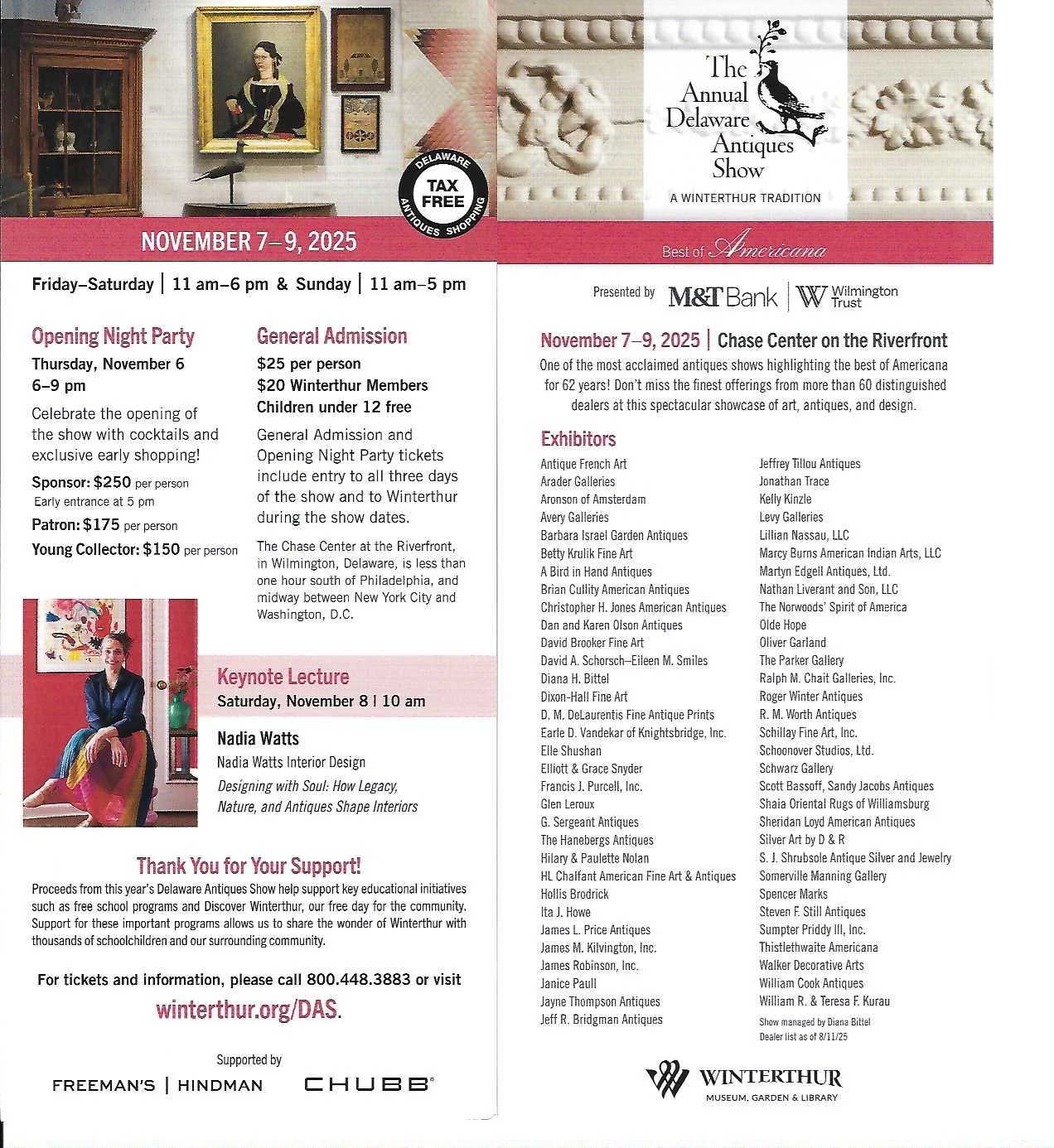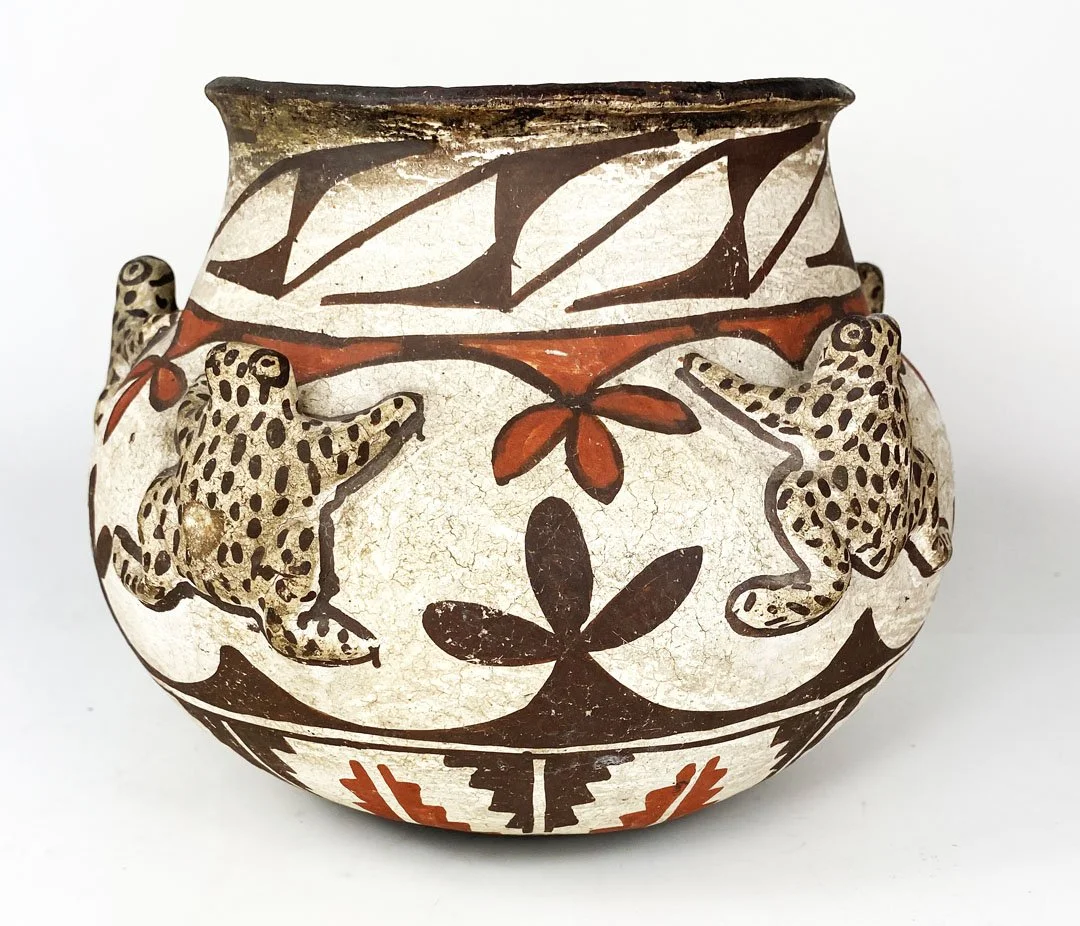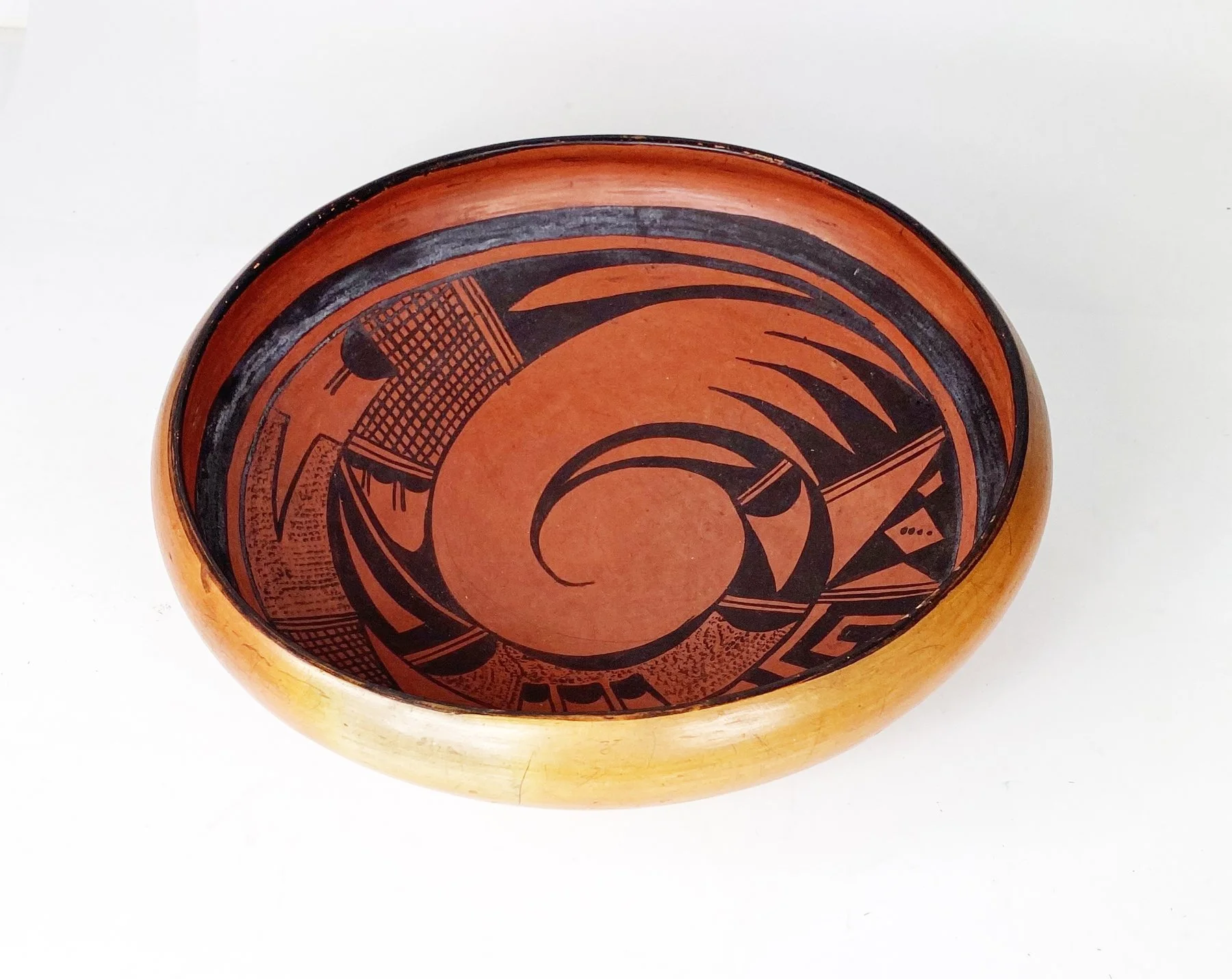I have previously written about this fabulous and rare Navajo (Dine’) pictorial rug but I want to add more comments and photos about it. This textile is extremely rare and interesting and it merits close scrutiny.
The figures in the central dark band of this Navajo (Dine’) textile are portrayed as yeibichai dancers. Yeibichai dancers are Navajo men and women who dance in particular ceremonies, representing various characters in the Navajo ceremony. In this pictorial textile, the dancers are framed in the middle on a dark background, perhaps implying that they are dancing in the Nightway ceremony, which is a healing ceremony.
There is one figure on one side of the dancers who is wearing a headband with multiple feathers. He is likely representing Talking God. There is another figure dressed in a red shirt on the other side of the dancers who might be Water Sprinkler.
Please note that the dancers are all wearing red moccasins. It is also interesting that the four figures on horseback in the surrounding border are also wearing red moccasins. This implies that these riders are likely Navajo (Dine’). Two of these riders are also wearing white cowboy hats.
The Navajo (Dine’) were not sedentary. They often ended up ranching once they were forced onto Reservations in the late 19th century. The strong reference to horses in this textile is consistent with their lives.
Please also note that the white horses’ heads cross into the negative central band. There are 4 diamonds (one near each end) that provide an “exit” from the interior white band. There is also a narrow black band providing an exit from the central black band. Traditional Navajo weavers were uncomfortable with borders, wanting the good health and spirits that helped the woman weave exit in order to help her in the future.
This textile was likely woven circa 1920-1930. The Dine’ were forced onto reservation in the late 19th century. Traders liked borders and encouraged the weavers to incorporate them but an older, more traditional weaver would have often provided these kinds of exits in her design.
Given the size and details of this textile (it took a long time to weave), it is not unreasonable to think that this rug might have been a commissioned work by a nearby rancher or traveler.









































